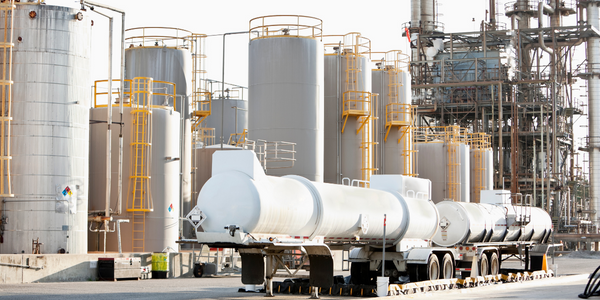Customer Company Size
Large Corporate
Region
- Europe
Country
- United Kingdom
Product
- JDA® Warehouse Management
Tech Stack
- Automated Storage and Retrieval
- Pick by Light
- Powered Conveyor
- Paperless Operation
Implementation Scale
- Enterprise-wide Deployment
Impact Metrics
- Productivity Improvements
- Customer Satisfaction
Technology Category
- Functional Applications - Warehouse Management Systems (WMS)
Applicable Industries
- Pharmaceuticals
Applicable Functions
- Warehouse & Inventory Management
Use Cases
- Inventory Management
- Warehouse Automation
Services
- Software Design & Engineering Services
- System Integration
About The Customer
Teva UK Limited is a major supplier of pharmaceutical products to the UK health service. The company adheres to stringent quality procedures in order to safeguard the integrity of its stock, tracking products both by EAN number and batch number. Stock must be kept in temperature-controlled conditions and in an environment that meets the highest standards of cleanliness. The company processes approximately 140 orders daily, with total pick volumes averaging more than 9,200 carton equivalents. Teva distributes the majority of its deliveries to pharmaceutical wholesalers, as well as some self-distributing pharmacy chains. The pharmaceutical wholesalers will then distribute to local independent pharmacies, hospital pharmacies, and high street and supermarket chain pharmacies, which in turn dispense medicines to UK patients.
The Challenge
Teva UK Limited, a major supplier of pharmaceutical products to the UK health service, needed to optimize its supply chain to handle the growing complexity and scale of its business. The company adheres to stringent quality procedures to safeguard the integrity of its stock, tracking products both by EAN number and batch number. Stock must be kept in temperature-controlled conditions and in an environment that meets the highest standards of cleanliness. Due to the growing complexity and scale of its business, Teva decided to build a new logistics center that would support its increasing volume and provide new ways to service its customers. The company sought a warehouse management solution, with advanced features such as automated storage and retrieval, pick by light, a powered conveyor and a paperless operation, that would enable it to increase efficiencies, save costs and improve service in the new facility.
The Solution
After evaluating eight technology providers, Teva selected a warehouse management solution from JDA Software’s Intelligent Fulfillment™ suite, due to the company’s strong partnership and experience in the pharmaceutical industry. The warehouse management solution enables Teva to optimize all of its processes — from goods-in to customer dispatch — as well as trace inventory across the supply chain. The solution manages throughput in Teva’s 280,000 square foot (25,000 square meters) facility, and enables Teva to integrate hazardous, odd-shaped and high-value items at a single site in order to achieve maximum efficiency. Teva stores more than 850 stock-keeping units in its facility. The company uses pick-by-light technology in its dedicated item pick area, with multiple orders picked from a specific zone. When complete, cartons are transported on conveyors to the next appropriate zone for customer order packing. Automated processing ensures that finished orders are sent to one of 78 shipping lanes, cartons are labeled and secure strapping is applied.
Operational Impact
Quantitative Benefit

Case Study missing?
Start adding your own!
Register with your work email and create a new case study profile for your business.
Related Case Studies.

Case Study
Case Study: Pfizer
Pfizer’s high-performance computing software and systems for worldwide research and development support large-scale data analysis, research projects, clinical analytics, and modeling. Pfizer’s computing services are used across the spectrum of research and development efforts, from the deep biological understanding of disease to the design of safe, efficacious therapeutic agents.

Case Study
Fusion Middleware Integration on Cloud for Pharma Major
Customer wanted a real-time, seamless, cloud based integration between the existing on premise and cloud based application using SOA technology on Oracle Fusion Middleware Platform, a Contingent Worker Solution to collect, track, manage and report information for on-boarding, maintenance and off-boarding of contingent workers using a streamlined and Integrated business process, and streamlining of integration to the back-end systems and multiple SaaS applications.

Case Study
Process Control System Support
In many automated production facilities, changes are made to SIMATIC PCS 7 projects on a daily basis, with individual processes often optimised by multiple workers due to shift changes. Documentation is key here, as this keeps workers informed about why a change was made. Furthermore, SIMATIC PCS 7 installations are generally used in locations where documentation is required for audits and certification. The ability to track changes between two software projects is not only an invaluable aid during shift changes, but also when searching for errors or optimising a PCS 7 installation. Every change made to the system is labour-intensive and time-consuming. Moreover, there is also the risk that errors may occur. If a change is saved in the project, then the old version is lost unless a backup copy was created in advance. If no backup was created, it will no longer be possible to return to the previous state if and when programming errors occur. Each backup denotes a version used by the SIMATIC PCS 7 system to operate an installation. To correctly interpret a version, information is required on WHO changed WHAT, WHERE, WHEN and WHY: - Who created the version/who is responsible for the version? - Who released the version? - What was changed in the version i.e. in which block or module of the SIMATIC PCS 7 installation were the changes made? - When was the version created? Is this the latest version or is there a more recent version? - Why were the changes made to the version? If they are part of a regular maintenance cycle, then is the aim to fix an error or to improve production processes? - Is this particular version also the version currently being used in production? The fact that SIMATIC PCS 7 projects use extremely large quantities of data complicates the situation even further, and it can take a long time to load and save information as a result. Without a sustainable strategy for operating a SIMATIC PCS 7 installation, searching for the right software version can become extremely time-consuming and the installation may run inefficiently as a result.

Case Study
ELI LILLY ADOPTS MICROMEDIA’S ALERT NOTIFICATION SYSTEM
Pharmaceutical production is subject to a strict set of enforced rules that must be adhered to and compliance to these standards is critically necessary. Due to the efforts of WIN 911’s strategic partner Micromedia, Lilly was able to adopt an alarm notification infrastructure that integrated smoothly with their existing workflows and emergency hardware and protocols. These raw energy sources enable the industrial process to function: electricity, WIN-911 Software | 4020 South Industrial Drive, Suite 120 | Austin, TX 78744 USA industrial steam, iced water, air mixtures of varying quality. Refrigeration towers, boilers and wastewater are monitored by ALERT. Eli Lilly identified 15000 potential variables, but limitations compelled them to chisel the variable list down to 300. This allowed all major alarms to be covered including pressure, discharge, quantity of waste water discharged,temperature, carbon dioxide content, oxygen & sulphur content, and the water’s pH.









